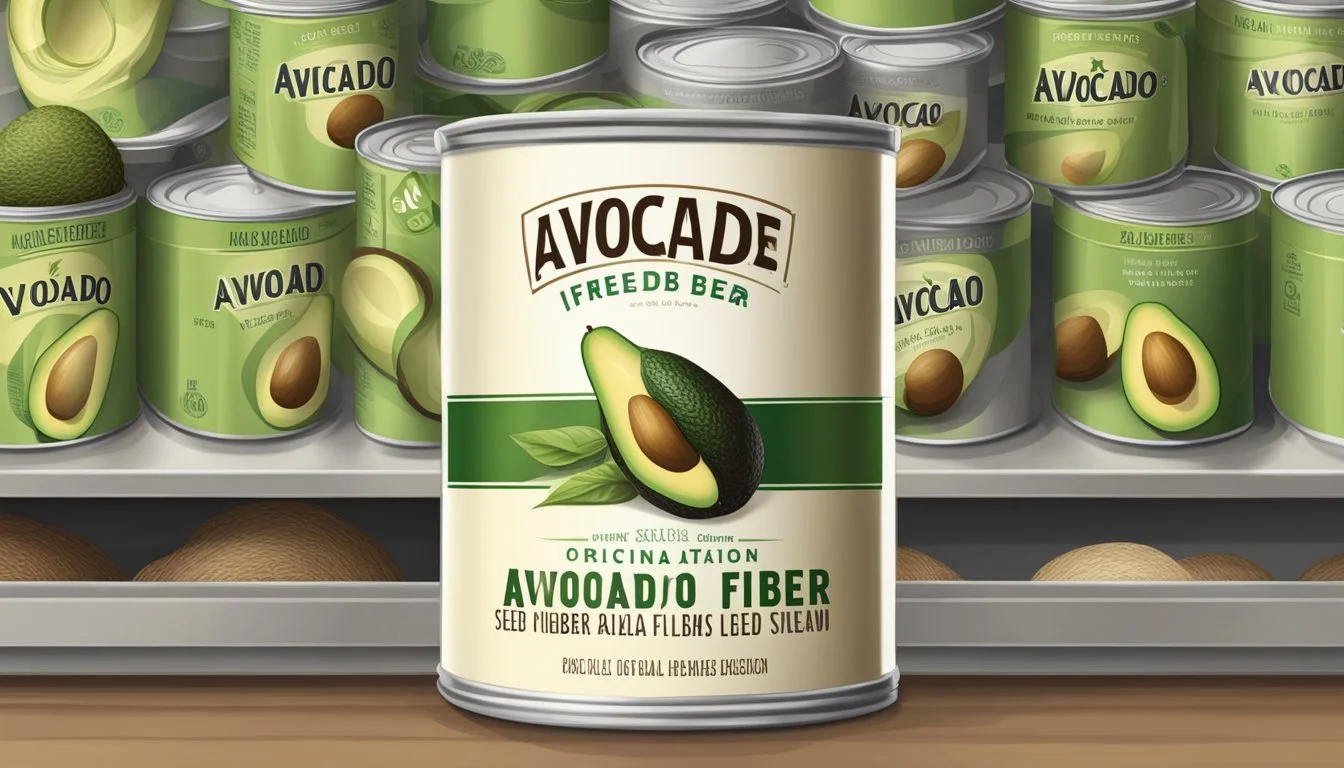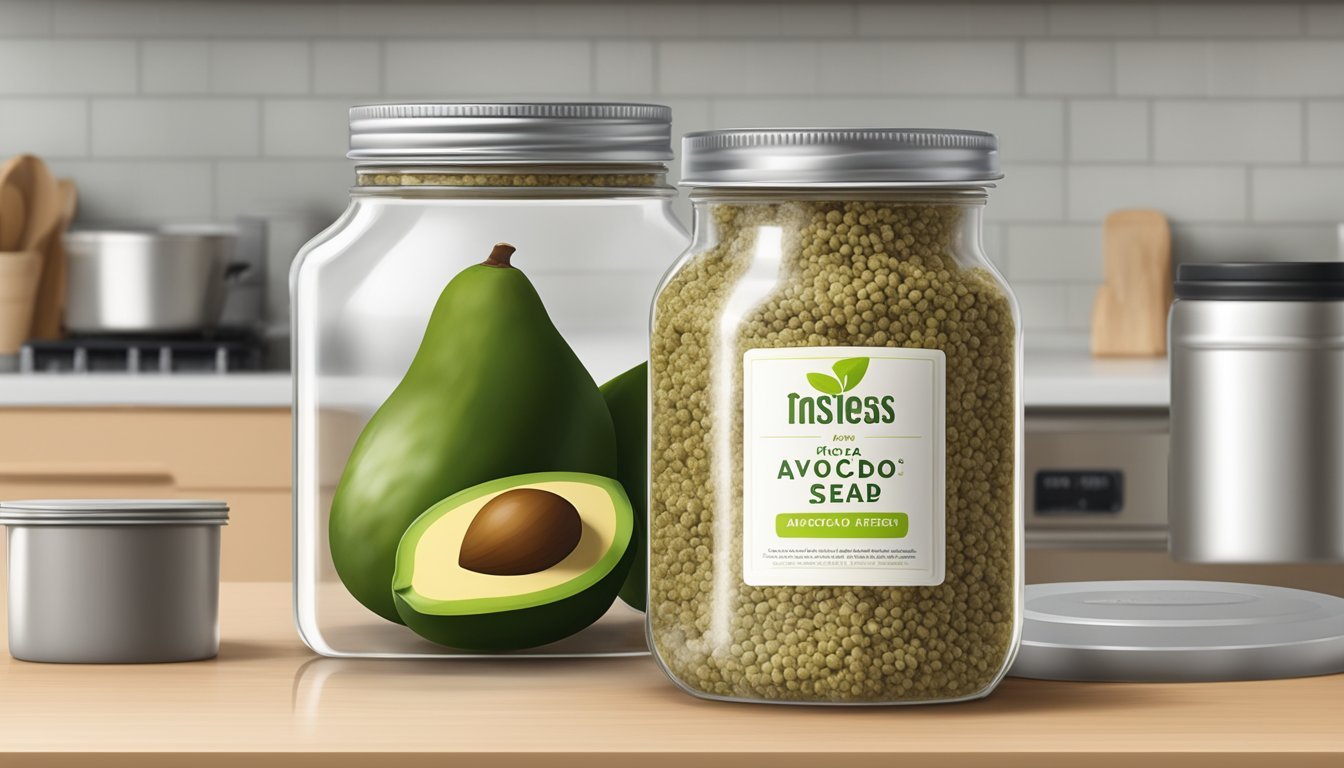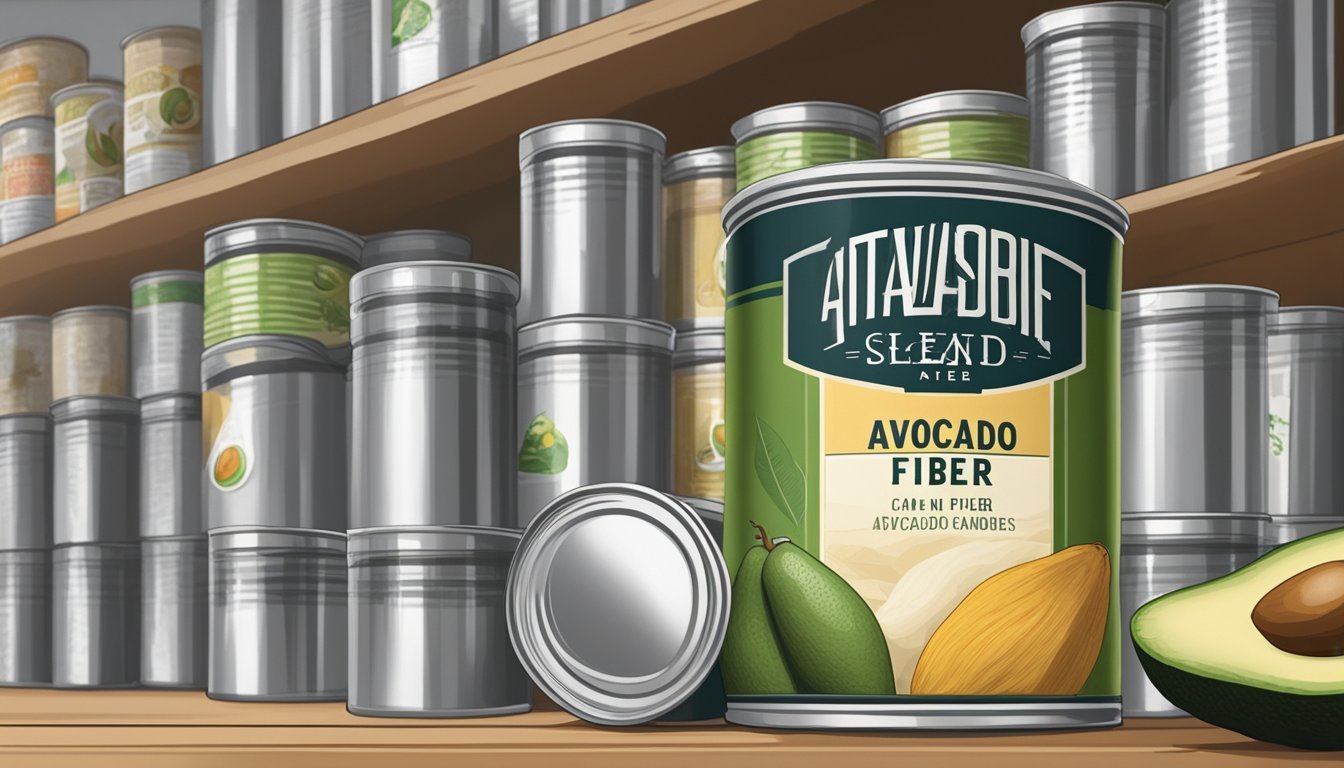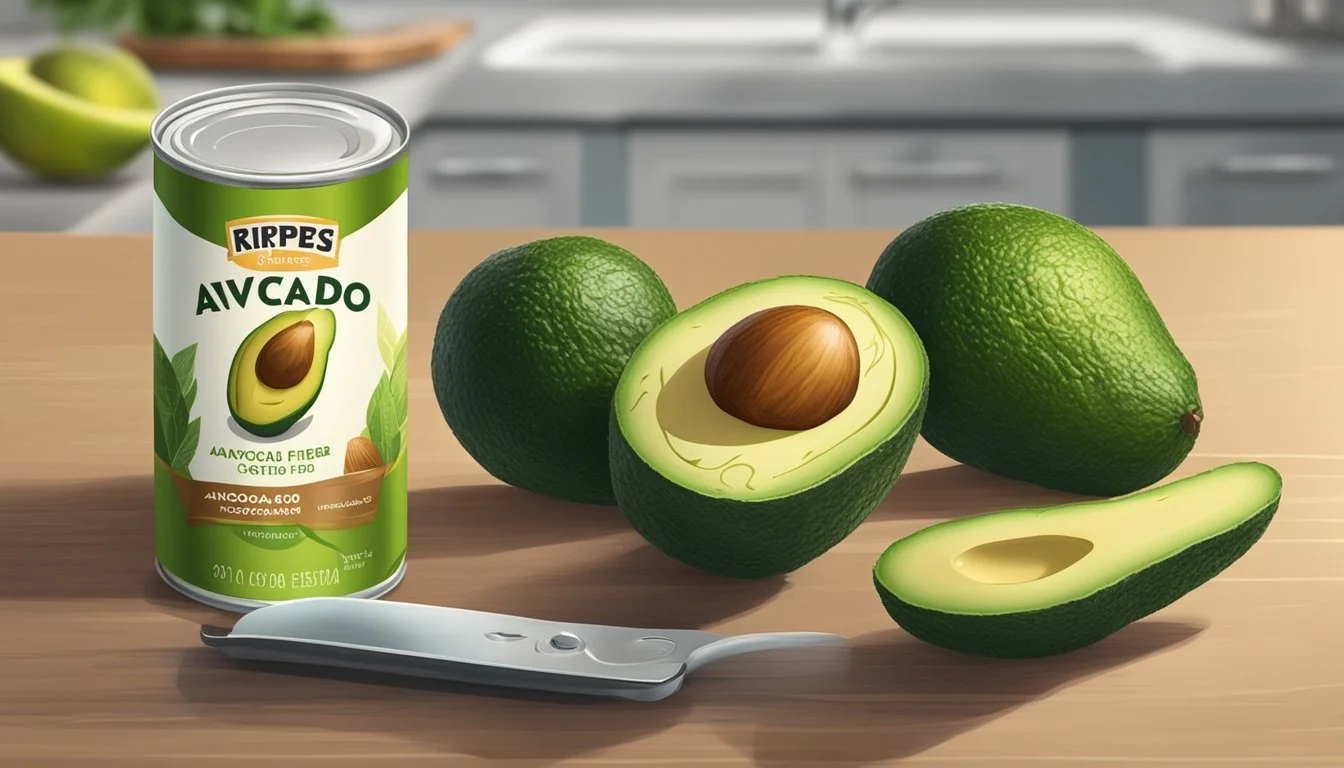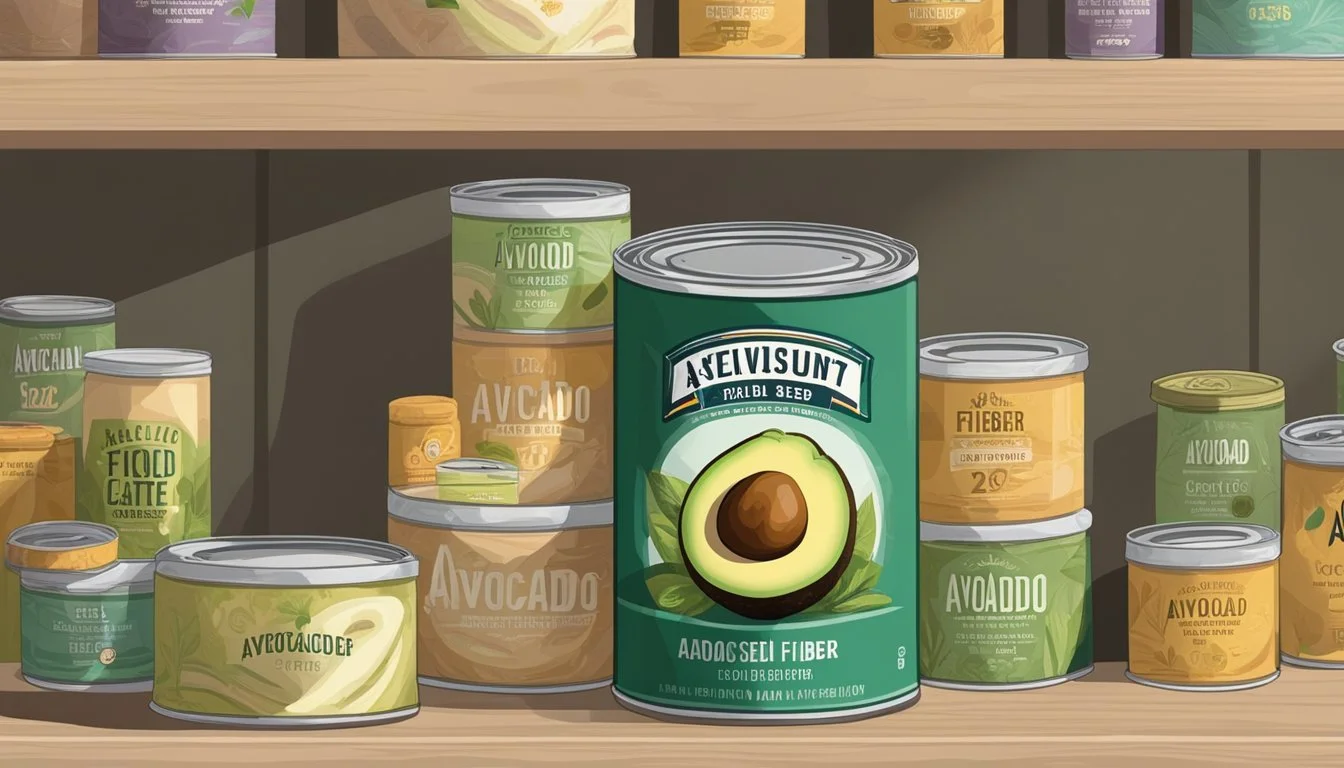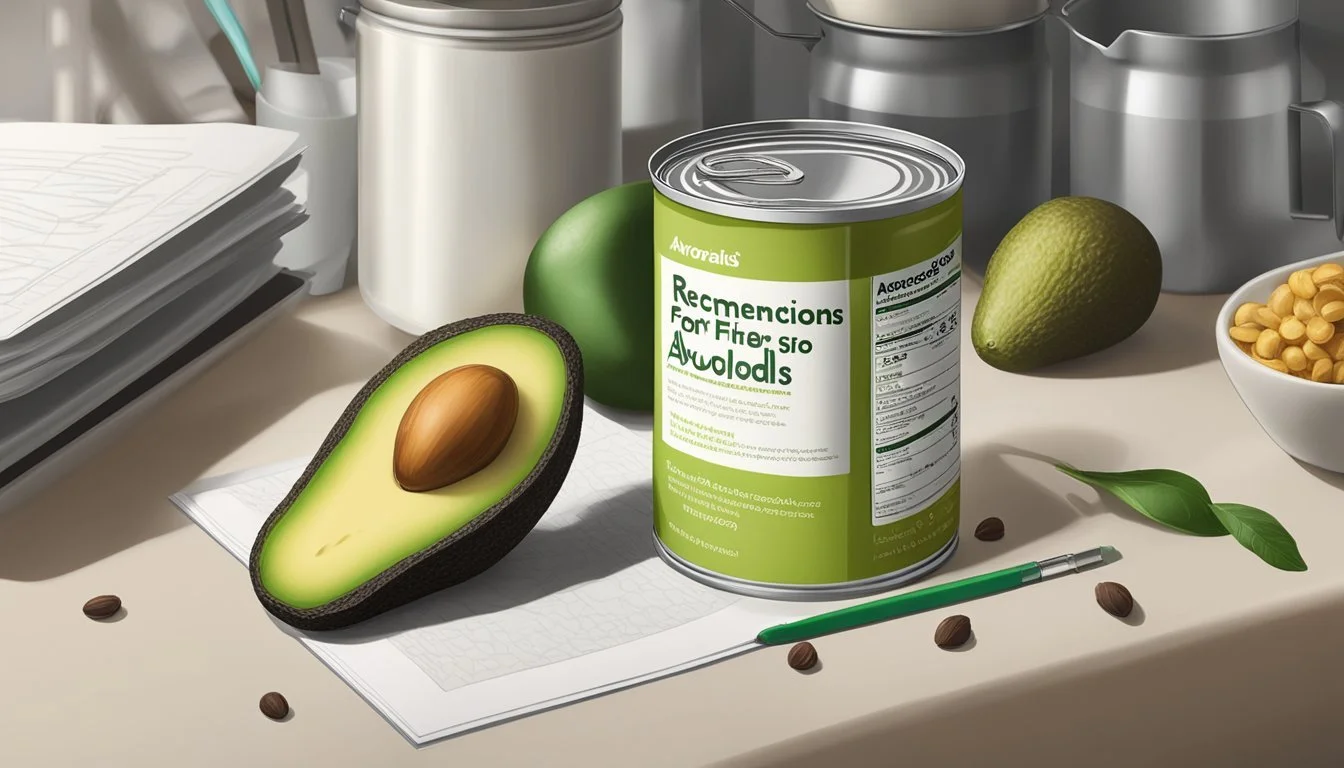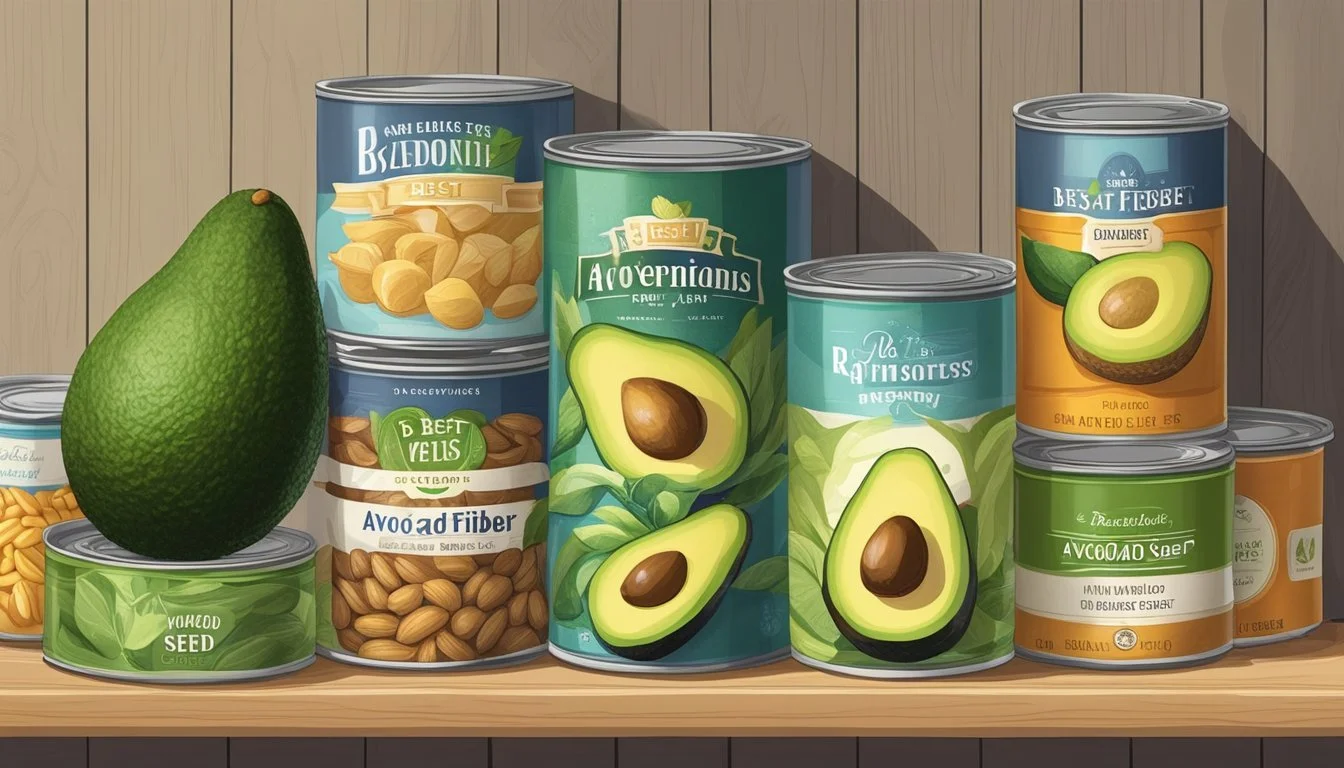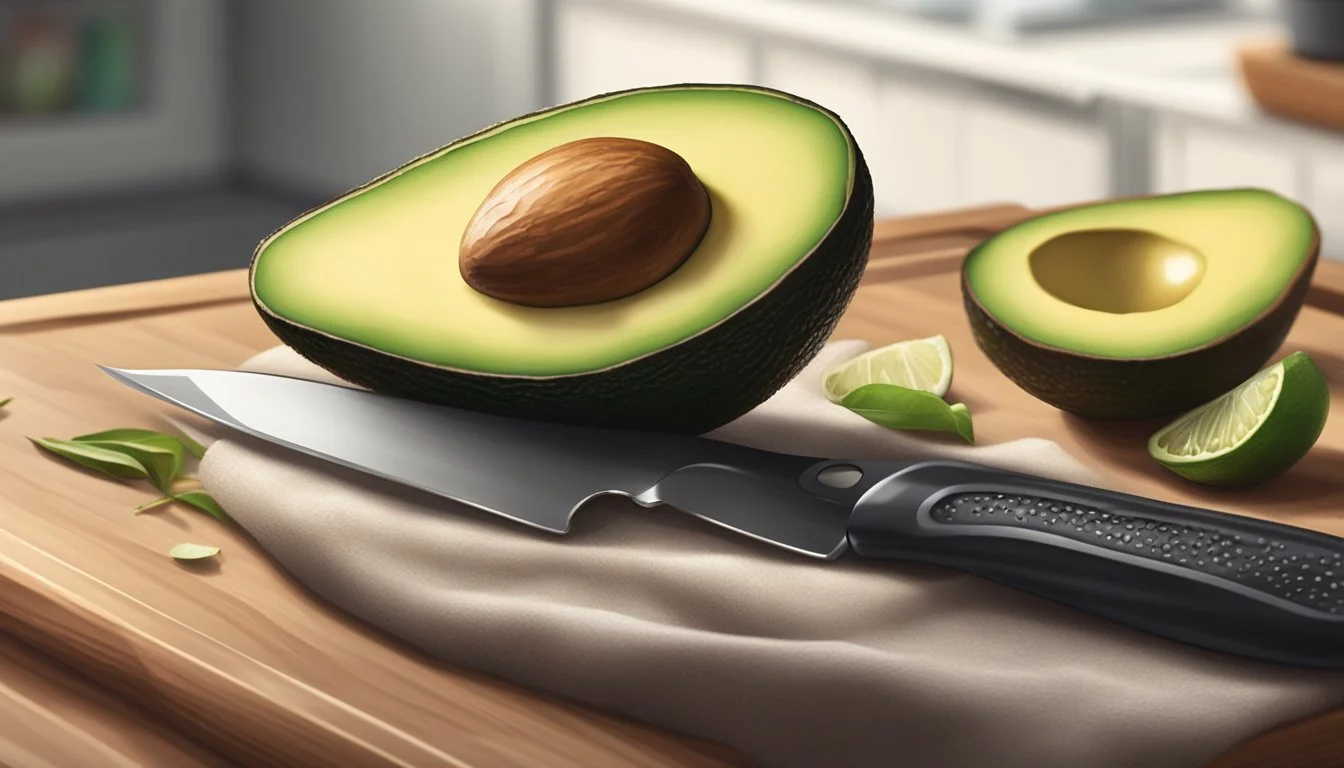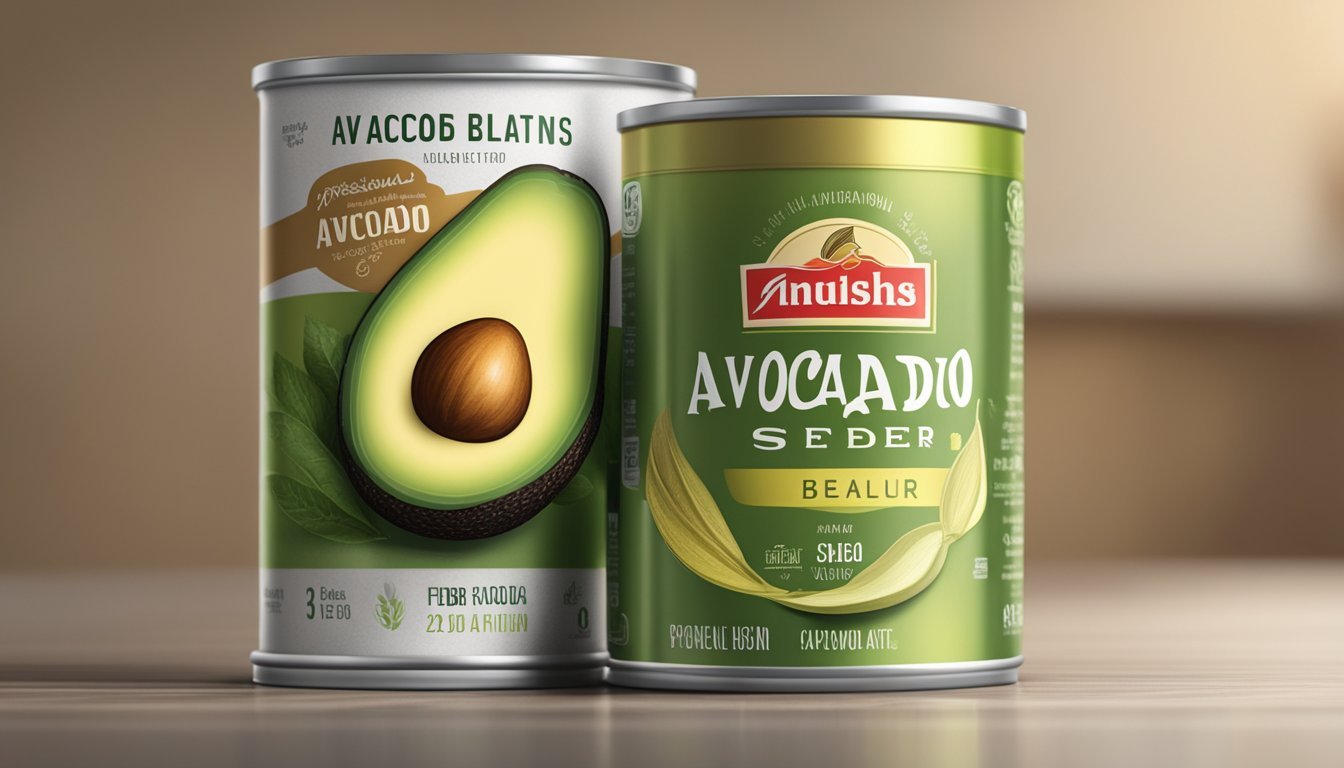How Long Does Canned Avocado Seed Fiber Last?
Understanding Shelf Life and Storage Tips
Canned foods have long been a staple for preserving the shelf life of various products, including fruits, vegetables, and their derivatives. Avocado, a fruit rich in healthy fats and fiber, is no exception to this preservation method. When considering the longevity of canned avocado products, specifically those containing avocado seed fiber, it's essential to understand the two main factors that impact their shelf life: canning process and storage conditions.
Avocado seed fiber is a byproduct often overlooked, yet it contains a range of nutrients. As with other canned foods, the shelf life of canned avocado seed fiber depends largely on the environment in which it is stored. Typically, when properly canned and sealed, avocado seed fiber can maintain its quality for an extended period, often ranging from one to five years. This timeframe ensures that the fiber retains its nutritional benefits without significant degradation.
To maximize the lifespan and quality of canned avocado seed fiber, it is recommended to store the cans in a cool, dark place, away from temperature fluctuations and direct sunlight. The consistency of the environment helps to prevent the breakdown of the fiber and other compositional elements of the avocado seed. Manufacturers also play a crucial role by following the best canning practices which include sterilization and proper sealing to block out external contaminants that could potentially spoil the contents.
Understanding Avocado Seed Fiber
Avocado seed fiber is a type of dietary fiber found within the seed of an avocado. Unlike the creamy flesh of this popular fruit, the seed is not as commonly consumed but does offer nutritional benefits due to its high fiber content. Dietary fiber is essential in any diet as it aids in digestion and can have a beneficial effect on cholesterol levels.
The fiber from an avocado seed is predominantly insoluble, meaning it does not dissolve in water. This form of fiber helps to add bulk to stool and can support regular bowel movements. It also plays a role in maintaining a healthy digestive tract.
Aside from fiber, avocado seeds may contain antioxidant properties. Antioxidants are known to combat oxidative stress in the body, which can contribute to chronic diseases. The potential for antioxidants in avocado seeds is an area of interest, however, it's important for consumers to note that research on the nutritional profile of avocado seed fiber, including antioxidant content, is not as thorough as the flesh.
When considering the incorporation of avocado seed into a diet for its fiber and potential nutritional benefits, one should be aware of the appropriate processing methods, as the raw seed is not palatable. It is typically ground into a powder. However, there are no standard guidelines on how much avocado seed fiber one should consume, and its long-term health effects are still under investigation.
In terms of protein, avocado seed contains a small amount, although not as significant as the fiber content. Including avocado seed fiber in the diet should be approached with moderation and as a complement to other sources of nutrients to ensure a balanced intake.
Freshness and Storage Fundamentals
When storing avocados, maintaining freshness is crucial to extend their usability. Avocados are sensitive to their storage environment, and various factors can affect their longevity.
Room Temperature Storage:
Avocados continue to ripen after being picked. At room temperature, they usually reach optimal ripeness within 3-4 days. For those who plan to consume avocados soon after purchase, keeping them on the countertop is suitable. It's vital to avoid direct sunlight or heat, which can accelerate ripening.
Refrigeration:
To slow down the ripening process, avocados can be stored in the refrigerator. This is particularly effective once they've reached the desired level of ripeness. A fridge's lower temperature reduces the activity of ethylene gas, a natural compound that promotes ripening.
Whole avocados: Can last several days longer when refrigerated.
Cut avocados: Should be treated to prevent browning caused by oxidation. Brushing the cut surfaces with lemon or lime juice, both of which are acidic, can inhibit discoloration.
Airtight Containers:
Storing avocados, especially cut ones, in airtight containers or wrapped tightly with plastic wrap further minimizes air exposure, slowing oxidation. Some prefer using a paper bag to trap ethylene gas, which can speed up ripening of other fruits nearby. To store, place the avocados in the container or bag and keep them in a cool, dark place.
Extended Storage:
For those looking to keep avocados for an extended period, freezing is an option. Pureed or halved avocados can be frozen and kept for several months. However, this text focuses on canned avocado seed fiber, which has a different storage profile compared to fresh avocados or their pulp. Canned avocado seed fiber, if kept in an unopened, airtight container in a cool, dry place, retains its quality for much longer due to the preservation process. Once opened, it should be transferred to an airtight container and can last for several months when stored properly in the refrigerator.
In conclusion, storing avocados correctly can significantly impact their shelf life, allowing you to enjoy their benefits for an extended period.
Optimizing Avocado Ripeness
Achieving the perfect level of ripeness in avocados is crucial for their flavor and texture. This section provides guidance on how to identify ripe avocados and manage the ripening process for those that are unripe.
Identifying Ripe Avocados
A ripe avocado usually has dark green to brown skin, yields to gentle pressure, and feels slightly soft when held. One should check the firmness by applying a soft squeeze; it should not be mushy. A visual indicator of ripeness can be found under the stem; removing the stem will reveal green if the avocado is ripe, but if the color appears brown, it may be overripe. The level of firmness should correlate with immediate use—firmer for use in the next couple of days, softer for consumption that day.
Managing Ripeness for Unripe Avocados
Unripe avocados are typically lighter in color and firmer to touch. To expedite their ripening, one can place them in a paper bag with a piece of ethylene-producing fruit like an apple or banana. The bag should be stored at room temperature, away from direct sunlight. Ethylene gas, naturally released by the fruit, speeds up the ripening process.
Checking the avocados daily is essential as they can go from unripe to ripe within 1-2 days under these conditions. Once an avocado reaches the desired ripeness, storing it in the refrigerator will slow down the process significantly, giving a consumer more time to use it. If the avocado is still unripe and there is a need for immediate use, placing it in a warm area may help it ripen quicker, but this method should be monitored closely to prevent overripening.
Extending Shelf Life
When it comes to preserving the shelf life of canned avocado seed fiber, storage conditions are paramount. Proper refrigeration is one of the most effective ways to extend shelf life. It is recommended to store the canned fiber at a consistent temperature between 35-40°F. This helps prevent the proliferation of bacteria and mold, which can compromise quality.
Best Practices Description Temperature Control Keep refrigerated at 35-40°F to slow bacterial growth. Sealed Environment Use airtight storage containers to limit oxygen exposure. Dry Conditions Store in low humidity to prevent mold formation.
In addition to refrigeration, the fiber should be sealed in an airtight storage container. This minimizes its exposure to oxygen, which can accelerate deterioration. Similarly, ensuring that the environment is dry can further prevent mold growth, which could impact the product's usability.
When considering the option to freeze avocado seed fiber, one should be aware that, while freezing can extend shelf life significantly, it may also alter the texture or consistency upon thawing. If freezing is chosen, wrapping the product in plastic wrap can provide an additional barrier against freezer burn and oxidative damage.
Consumers should always verify that the integrity of the packaging is maintained—any sign of damage or seal breach can introduce contaminants and reduce shelf life. By consistently following these storage guidelines, one maximizes the longevity and usability of canned avocado seed fiber.
Preventing Avocado Browning
When one cuts into an avocado, exposure to air initiates an enzymatic reaction resulting in browning. This oxidation process can be delayed with a few simple techniques that involve minimizing the avocado's contact with air. Lemon or lime juice, both rich in citric acid, is often recommended. A thin layer of these juices applied directly to the cut surface acts as a barrier.
Airtight storage is another effective method. Placing the avocado in an airtight container or tightly wrapping it with cling film ensures minimal air contact. For avocados that have been pureed or mashed, pressing the plastic wrap directly onto the surface before sealing the container can be particularly beneficial.
Quick Reference Table:
Method Description Application Citrus Juice The citric acid in lemon or lime juice slows down oxidation. Brush on the cut surfaces. Airtight Container Reduces air exposure to the avocado flesh. Place avocado inside and seal. Plastic Wrap Provides a tight seal against the avocado surface. Wrap directly onto avocado halves.
These methods focus on avocado preservation post-cutting and do not apply to whole avocados. Maintaining the integral quality of avocado remains crucial; hence, these methods should not be mistaken for long-term storage solutions. The effectiveness can vary depending on individual avocado freshness and environmental factors such as temperature and humidity.
Recommendations for Avocado Use
In order to enjoy avocados' rich texture and nutrients, one should incorporate them into various meals and beverages. They can enrich the flavor and nutritional profile of recipes, from smoothies to salads.
Avocado in Recipes
Avocados serve as a versatile ingredient in recipes. Their creamy texture makes them ideal for guacamole, where they're often mixed with tomatoes, onions, and seasonings. In salads, they add a satisfying richness that complements leafy greens and vinaigrettes. For a heartier dish, sliced or cubed avocados can top toast, meld well with scrambled eggs, or enhance sandwiches.
Avocado in Smoothies
When added to smoothies, avocados bring a creamy texture that can substitute for dairy.
Texture: Avocados offer a smoother, more velvety consistency compared to other fruits.
Nutrition: They contribute healthy fats and a subtle, buttery flavor without overpowering other ingredients.
By blending ripe avocados with fruits like bananas or berries, one can create a nutritious and indulgent drink.
Serving Fresh Avocado
Fresh avocados can greatly enhance the appeal of various dishes.
Sliced: Adds a creamy component to sandwiches or burgers.
Cubed: Makes a nutritious topping for salads or bowls.
Halved: Can be filled with shrimp or crab salad for a refined appetizer.
For those looking to simply enjoy the fruit's purity, a sprinkle of salt and a dash of lime enhance the natural flavors of avocado.
Safety Considerations and Food Handling
When considering the safety and handling of canned avocado seed fiber, it is imperative to follow the guidelines established by food safety authorities such as the FDA. The canning process of avocado seed fiber aims to eliminate pathogens such as Salmonella and Listeria monocytogenes which are known to cause food poisoning.
Proper Storage:
Temperature: Store cans in a cool, dry place to maintain product integrity.
Pressure: Avoid cans that show signs of bulging, which may indicate bacterial growth and the potential for food-borne illness.
Before Use:
Inspect: Check for any signs of damage or rust on the can, as these can compromise the safety of its contents.
Wash: Clean the can's exterior to remove any contaminants before opening.
After Opening:
Color: The contents should have a consistent color, free from discoloration, which could signal spoilage.
Refrigeration: If not using all the product immediately, transfer unused portions to a clean, sealed container and refrigerate.
By adhering to these handling practices, one can significantly reduce the risk of food-borne illness while ensuring that the nutritional properties of the avocado seed fiber are preserved.
Creative Ways to Preserve Avocado
For those looking to extend the life of their avocados, preservation is key. Freezing avocados and transforming them into avocado oil are two effective methods to retain the fruit's beneficial properties and flavor.
Freezing Avocado Puree
To preserve the freshness of an avocado, one can freeze the flesh in the form of a puree. After removing the pit and skin, one should mash the avocado until it achieves a smooth consistency. A blender can also be employed for an even, creamy texture. Once pureed, it is crucial to place the mixture into an airtight container or a sealable bag before placing it into the freezer. This prevents freezer burn and preserves the quality of the avocado puree.
Steps to Freeze Avocado Puree:
Extract the avocado flesh and remove any browned spots.
Puree using a fork, potato masher, or blender.
Transfer to an airtight container or bag, pressing out excess air.
Frozen avocado puree can last for three to six months when stored properly in the freezer.
Making Avocado Oil
Another innovative preservation method is creating avocado oil, which involves a combination of heat and processing to extract the oil from the fruit. Initially, the flesh of the avocado needs to be dried out to remove moisture, typically achieved through an oven or dehydrator. Following drying, the dried avocado is then combined with a carrier oil, such as olive oil, to facilitate the oil extraction process.
Equipment for Making Avocado Oil:
Oven or dehydrator
Blender to grind the dried flesh
Strainer or cheesecloth
Container for storing the oil
This oil can serve a variety of uses, from culinary applications to skincare, and showcases the versatility of avocados beyond their typical uses.
Avocado Varieties and Their Characteristics
Different avocado varieties offer unique characteristics that amaze both gardeners and food lovers. The Hass variety has taken the culinary world by storm due to its creamy texture and nutty flavor. One can easily recognize the Hass avocados by their thick skin that darkens from green to black as they ripen. They can grow quite large, as much as 35 feet, but pruning can keep them at a manageable height.
Reed avocados, falling under the type A classification, stand out as their skin remains a vibrant green color even when ripe. Unlike the Hass, the Reed variety doesn't darken, which can be a tell-tale sign for consumers looking to differentiate between the two.
Moving on to the Bacon avocado, this variety is not as commonly recognized as the Hass but it has its distinctive smooth, thin skin that remains green upon ripening. The Bacon avocado displays hardiness and brings fresh avocados to tables typically during late fall to early winter.
Variety Skin Texture Fruit Size Flavor Ripening Skin Color Hass Thick Medium Nutty Green to Black Reed Smooth Large Mild Green Bacon Thin Medium Mild Green
Each variety contributes its own taste and texture to a myriad of dishes. The Hass is renowned for its high-fat content that contributes to its rich, buttery taste, while the lighter, less creamy variety such as the Reed offers a subtly different experience. Fresh avocados, regardless of variety, enrich a range of vegetables and dishes with their diverse flavor profiles and nutritional benefits.
Incorporating Avocado Into Dietary Habits
Avocado is regarded as a superfood due to its dense nutritional profile. It is a versatile food that can be easily integrated into one's diet. The fruit contains substantial amounts of healthy fats, which are primarily monounsaturated and can help with maintaining healthy cholesterol levels.
One can start by including avocados in daily meals by using them as a creamy substitute for spreads or dressings. They are often used in lieu of butter or mayonnaise due to their rich, creamy texture and beneficial fat content.
Nutritional Benefits:
Monounsaturated fats: Helps reduce LDL (bad) cholesterol
Dietary fiber: Aids digestion and satiety
Nutrient-dense: High in vitamins and minerals
Further, avocados are an excellent source of dietary fiber, crucial for digestive health and contributing to a feeling of fullness, which can aid in weight management.
Easy Ways to Include Avocado:
Slice and add to salads or bowls
Mash as a base for toast toppings
Blend into smoothies for extra creaminess
Avocados pair well with a variety of foods, including berries, salads, and even incorporated into meat dishes. They have been known to enrich the flavor profile of a meal while also increasing its nutritional value.
In conclusion, incorporating avocados into one's dietary habits can be a delightful and healthful way to enhance daily nutrient intake and enjoy a plethora of benefits due to its status as a superfood.
Understanding the Impact of Avocado on Overall Health
Avocados are recognized as a nutritious fruit packed with beneficial components that contribute to overall health. Their popularity as a superfood is attributed to their rich content of healthy fats, particularly monounsaturated fatty acids (MUFAs), which support cardiovascular health.
Essential Nutrients:
Dietary Fiber: Avocado provides about 12 grams per serving, aiding digestive health.
Protein: A moderate source, avocados contribute to a balanced diet.
Antioxidants: These compounds in avocados help neutralize free radicals.
The composition of avocados, particularly their healthy fats and dietary fiber, can help regulate cholesterol levels. Studies have indicated that consuming avocados may reduce total cholesterol (TC) and low-density lipoprotein cholesterol (LDL-C) in individuals with hypercholesterolemia.
While avocados are energy-dense due to their fat content, they do not negatively impact body weight when consumed as part of a balanced diet. The presence of dietary fiber creates a feeling of fullness, which can aid in controlling appetite and contribute to weight management.
In summary, incorporating avocados into one's diet can offer a variety of health benefits. As part of a balanced diet, avocados provide essential nutrients that support cardiovascular health, help manage cholesterol, and contribute to overall well-being. It is important, however, for consumers to consider portion sizes due to their caloric content.
Conclusion
When considering the longevity of canned avocado seed fiber, several essential factors influence its shelf life. Canning, by design, preserves the quality and freshness of avocado seed fiber for an extended period, much longer than its fresh counterpart.
Storage Conditions: Canned goods must be stored in a cool, dry place. The integrity of the can's seal is crucial; any compromise can lead to spoilage.
Shelf Life: On average, canned goods maintain their best quality for years beyond their expiration date, provided they've been stored properly. Specifically for canned avocado seed fiber, this means it can typically remain in good condition for years after canning.
Shelf Life Indicators:
Before Opening: The can itself should show no signs of damage or rust, and the seal should be intact.
After Opening: Once opened, the fiber should be stored in an air-tight container in the refrigerator and typically consumes within a few days for best quality.
It is vital to note that while the canning process extends shelf life, it does not last indefinitely. Check for off-smells, a change in texture, or discoloration, as these can indicate spoilage.
Preparation: Prior to use, the avocado seed fiber should be prepared properly, ensuring that it adds nutritional value while maintaining its intended quality.
In summary, canned avocado seed fiber, when stored and handled correctly, offers a convenient and long-lasting option for those seeking to incorporate this nutritional component into their diet.

